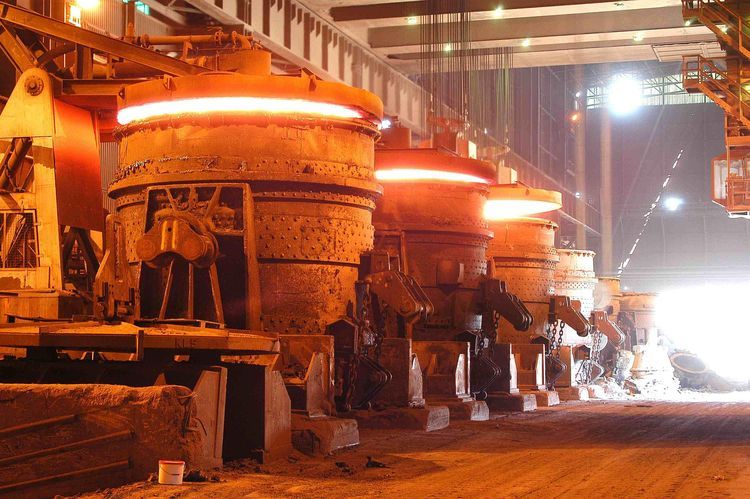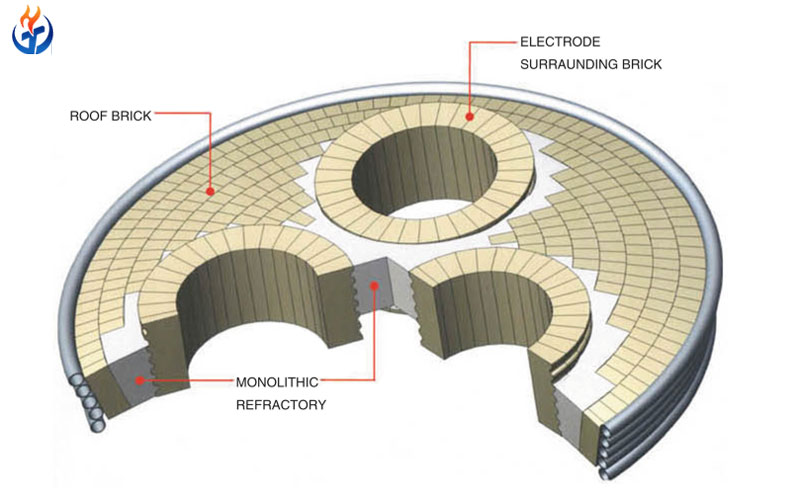When it comes to the performance and longevity of a cement rotary kiln, few factors are as crucial as the choice of refractory bricks. These materials form the protective inner lining of the kiln, shielding it from extreme temperatures, mechanical wear, and chemical corrosion. Selecting the right cement rotary kiln refractory bricks directly affects production efficiency, fuel consumption, clinker quality, and maintenance costs.
In this article, we will explore the key considerations when choosing refractory bricks for cement rotary kilns — from the operating zones and temperature ranges to the chemical atmosphere and installation methods. Whether you are involved in kiln design, maintenance, or refractory supply, understanding these selection criteria will help ensure stable kiln operation and optimal cost performance.

Understanding the Function of Refractory Bricks in a Cement Rotary Kiln
A cement rotary kiln is a long, rotating cylinder that operates at temperatures between 1000°C and 1450°C, converting raw meal into clinker. Inside the kiln, different zones are exposed to varying thermal, chemical, and mechanical conditions. Refractory bricks serve several critical purposes:
Thermal insulation: They minimize heat loss through the kiln shell and maintain the required internal temperature for clinker formation.
Mechanical protection: They protect the steel shell from abrasion caused by clinker movement and the rotation of the kiln.
Chemical resistance: They resist alkali attack, sulphur compounds, and other corrosive elements from fuels and raw materials.
Dimensional stability: They maintain integrity under thermal cycling and load.
Because each section of the kiln experiences different stresses, different refractory materials must be used for each zone.
Kiln Zones and Corresponding Refractory Requirements
A cement rotary kiln typically consists of the following zones:
(1) Inlet and Preheating Zone (Up to 1000°C)
This area experiences moderate temperatures but high chemical attack from alkalis and sulphates. The refractory bricks here should have:
Good alkali resistance
Low thermal conductivity
Moderate mechanical strength
Recommended materials: fireclay bricks, high-alumina bricks, or alkali-resistant bricks.
(2) Transition Zone (1000–1200°C)
The transition zone connects the cooler inlet with the high-temperature sintering area. It faces significant thermal fluctuations and mechanical stress from clinker movement.
Required properties:
High thermal shock resistance
Strong mechanical strength
Resistance to clinker abrasion
Recommended materials: high-alumina bricks (60–80% Al₂O₃) or mullite bricks.
(3) Burning Zone (1300–1450°C)
The burning zone is the hottest and most critical section of the kiln. Here, the raw meal transforms into clinker, and the lining must endure the highest thermal load, molten clinker attack, and redox atmosphere changes.
Required properties:
Excellent refractoriness under load (RUL)
Strong resistance to chemical corrosion
Good thermal shock resistance
Recommended materials: magnesia-spinel bricks, magnesia-alumina bricks, or magnesia-chrome bricks (though chrome types are being replaced due to environmental concerns).
(4) Cooling Zone (Below 1000°C)
In this zone, clinker is rapidly cooled before entering the cooler. The temperature gradient is steep, and thermal stress is high.
Required properties:
Strong thermal shock resistance
Abrasion resistance
Recommended materials: high-alumina bricks, spinel bricks, or silicon carbide bricks (for high wear resistance).
Factors to Consider When Selecting Refractory Bricks
Choosing the right cement rotary kiln refractory bricks requires balancing several performance and economic factors. Let’s examine the most important considerations.
(1) Operating Temperature and Thermal Load
Each zone’s maximum temperature determines the type of refractory material needed. For example:
Below 1200°C → clay or high-alumina bricks
1200–1400°C → mullite or high-alumina bricks
Above 1400°C → magnesia-based bricks
Using low-grade bricks in high-temperature zones can lead to premature failure, while over-specifying increases cost unnecessarily.
(2) Chemical Environment
The chemical composition of the kiln feed, fuel, and gases affects refractory corrosion. Common issues include:
Alkali attack: causes softening or swelling of bricks.
Sulphate attack: forms low-melting compounds.
Clinker dust infiltration: erodes the surface layer.
Alkali-resistant bricks or spinel-based bricks are ideal when chemical attack is a concern.
(3) Mechanical Stress and Abrasion
Refractory wear often occurs due to the movement of clinker, rotation of the kiln, and misalignment. Hard, dense bricks with high abrasion resistance are preferred for the transition and burning zones.
(4) Thermal Shock Resistance
Thermal cycling from start-ups, shutdowns, and feed changes can cause cracking and spalling. Materials like mullite bricks and magnesia-spinel bricks have superior resistance to such temperature fluctuations.
(5) Brick Shape and Installation
The lining design — including brick thickness, keying pattern, and mortar type — affects durability. Precision-cut bricks ensure tighter joints, minimizing infiltration of dust and gases.
For high-temperature zones, pressed or semi-rebonded bricks are preferred for their dimensional accuracy and structural strength.
(6) Cost and Service Life
While premium refractories like magnesia-spinel bricks have higher upfront costs, they often provide longer service life and reduced downtime. A cost-benefit analysis should consider lifetime performance, not just initial expense.
Common Types of Refractory Bricks for Cement Rotary Kilns
Below are some of the most widely used refractory brick types in the cement industry:
| Brick Type | Main Composition | Operating Temperature (°C) | Key Properties | Typical Application |
|---|---|---|---|---|
| Fireclay Brick | Al₂O₃ 30–45% | Up to 1350 | Good thermal shock resistance | Preheating zone |
| High-Alumina Brick | Al₂O₃ 60–80% | Up to 1500 | High strength, abrasion resistance | Transition zone |
| Mullite Brick | 3Al₂O₃·2SiO₂ | Up to 1600 | Low creep, good thermal stability | Transition/Burning zone |
| Magnesia-Spinel Brick | MgO + Spinel | Up to 1750 | Excellent corrosion & thermal shock resistance | Burning zone |
| Magnesia-Alumina Brick | MgO + Al₂O₃ | Up to 1750 | High refractoriness under load | Burning zone |
| Silicon Carbide Brick | SiC | Up to 1500 | High wear and thermal conductivity | Cooling zone |
Common Problems and Maintenance Tips
Even the best refractory materials can fail prematurely if not installed or maintained properly. Common issues include:
(1) Spalling and Cracking
Caused by rapid temperature changes or poor bonding.
Solution: use bricks with good thermal shock resistance; ensure gradual heating and cooling.
(2) Chemical Corrosion
Due to fuel impurities or raw mix composition.
Solution: adjust feed chemistry; use alkali-resistant or spinel-type bricks.
(3) Brick Erosion or Wear
Often seen in the transition zone.
Solution: use denser, abrasion-resistant bricks; ensure proper brick anchoring.
(4) Misalignment or Slippage
Can result from improper installation.
Solution: follow precise brick-laying patterns; use quality refractory mortar.
How to Extend Kiln Lining Life
To maximize the lifespan of cement rotary kiln refractory bricks, operators should:
Control kiln temperature and flame shape to reduce thermal shock.
Maintain consistent feed and fuel quality to minimize chemical fluctuations.
Inspect lining regularly for early signs of wear or deformation.
Use proper installation techniques with attention to expansion gaps and joint thickness.
Schedule periodic maintenance rather than waiting for failure.
A well-selected and properly maintained lining can last 12–24 months or longer, depending on operating conditions.
Conclusion
Selecting the right cement rotary kiln refractory bricks is both a science and an art. It requires understanding the kiln’s operating conditions, chemical atmosphere, and mechanical stresses. By choosing suitable materials for each zone and focusing on installation quality and maintenance, manufacturers can significantly improve kiln performance, reduce energy costs, and extend refractory life.
Whether you are upgrading an existing kiln or designing a new one, remember that the refractory lining is not just a protective layer — it is a key factor in the overall productivity and efficiency of your cement plant.
Need help with refractory lining materials or kiln insulation solutions for cement rotary kiln? Contact us for expert consultation and supply of high-performance rotary kiln refractory bricks.



